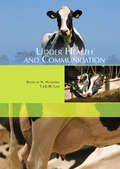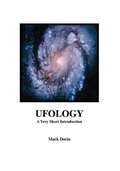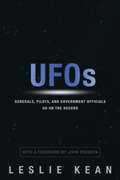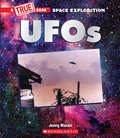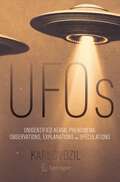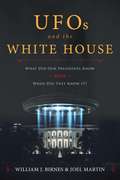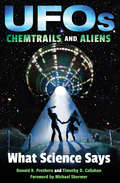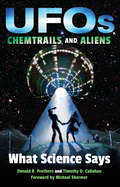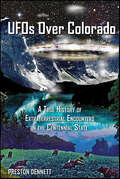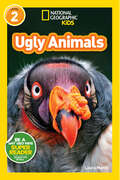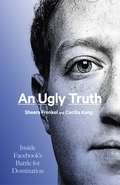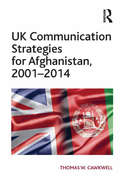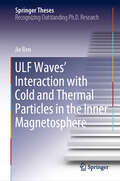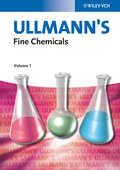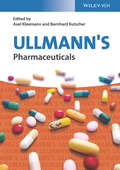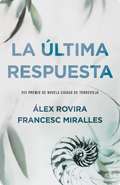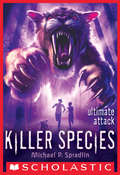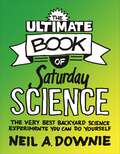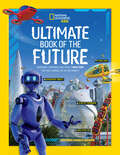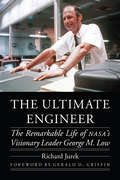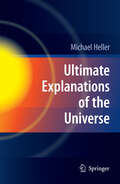- Table View
- List View
Udder Health and Communication
by H. Hogeveen T.J.G.M. LamIn dairy industries throughout the world there is a desire to optimize udder health. An improved udder health will lead to improved animal welfare, improved production efficiency and a reduction of the use of antibiotics. To improve udder health, first of all, technical knowledge on issues such as treatment, milking, infectious pressure and host resistance is important. However, over the years we learned that knowledge alone is not enough: knowledge has to be used. And for knowledge to be used, farmers have to be motivated. This requires knowledge about motivation and communication. In this book, recent knowledge on technical udder health issues is combined with knowledge on motivation and communication. A large number of descriptions of mastitis control programs that are being carried out worldwide is combined with more specific studies. These are aimed at effective advising, motivation and communication strategies, economics, and technical studies on mastitis control and prevention. Therefore, this book provides an applied source of information for all that are willing to improve udder health.
UFO Briefing Document: The Best Available Evidence
by Don BerlinerThe shattering report that stunned the world's top leaders—now available to the public!Are UFOs in our midst? The evidence mounts . . .1952 UFO squadrons over Washington, D.C. Tracked on radar. Visual sightings by military. Verdict: &“Unexplainable.&”1976 UFO dogfight with F-4 Phantom II jets over Tehran. Weapons &“jammed.&” Radar/visual confirmation. Verdict: &“Unavailable: Top Secret.&”1981 UFO lands in Trans-en-Provence. Investigated by French police. Soil samples analyzed. Verdict: &“UFO. No hoax.&”Compiled here are the most compelling and authenticated UFO cases ever recorded. Fresh from the government&’s secret files, spanning over a half century of eyewitness testimony, documented sightings, and unexplained phenomena, this groundbreaking compilation presents the chilling evidence that UFOs are real—and that a government cover-up has long suppressed the stunning truth.Complete with excerpts from official transcripts, diagrams, and photos, UFO Briefing Document, funded by Laurance Rockefeller and presented to Congress, contains critical information the public has a right to know . . . now, before it is too late.
Ufology: A Very Short Introduction
by Mark DorioUfology: Presents a serious survey of the study of UFOs and related phenomena, providing a good first step toward understanding this topic.
UFOs: Myths, Conspiracies, and Realities
by John B. AlexanderA never-before-heard firsthand account of a government insider's experience on the cutting edge of UFO exploration; includes a new afterword"Forget everything you think you know about UFOs - this insider's account exposes the reality... Packed with top grade information, insightful analysis and fascinating anecdotes, Alexander's interesting and controversial book sets the gold standard for titles on this subject." –Nick Pope, author of Open Skies, Closed Minds"Changes the playing field for both true believers and skeptics alike. Alexander strongly warns, be careful what you wish for when asking for presidential intervention. Success could set the field of ufology back decades." --George Noory, host of Coast to Coast AMWhile still on active duty in the U.S. Army during the 1980s, Colonel John B. Alexander, Ph.D. created an interagency group to explore the controversial topic of UFOs. All members held Top Secret clearance. What they discovered was not at all what was expected. UFOs covers the numerous cases they saw, and answers questions like:• What was really in Hanger 18? • Did a UFO land at Holloman Air Force Base? • What happened at Roswell? • What is Majestic 12? • What is the Aviary? • What does the government know about UFOs? • What has happened with disclosure in other countries? • Has the U.S. reverse engineered a UFO? • Why don't presidents get access to UFO info? UFOs is at once a complete account of Alexander's findings, and a call to action. There are no conspiracy theories here—only hard facts—but they are merely the beginning. Foreword by Jacques F. ValleeIntroduction by Burt RutanCommentary by Tom Clancy
UFOs: Generals, Pilots, and Government Officials Go on the Record
by Leslie KeanAn Air Force major is ordered to approach a brilliant UFO in his Phantom jet over Tehran. He repeatedly attempts to engage and fire on unusual objects heading right toward his aircraft, but his missile control is locked and disabled. Witnessed from the ground, this dogfight becomes the subject of a secret report by the U. S. Defense Intelligence Agency. In Belgium, an Air Force colonel investigates a series of widespread sightings of unidentified triangular objects, and he sends F-16s to attempt a cl...
UFOs: (a True Book: Space Exploration) (A True Book (Relaunch))
by Jenny MasonFrom the first time a person looked up at the sky and wondered "What's our there?" humans have dreamed about exploring the cosmos.This book is part of a series, A True Book: Space Exploration, that includes the titles Human Missions to Outer Space, Mars Rovers, The International Space Station, and UFO's. The series features the latest NASA imagery and lively text to bring the wonder of space exploration directly to readers.Over the years, there have been hundreds of reports of UFO (or unidentified flying object) sightings—which the U.S. government seemed to ignore. But a recently released Pentagon report tells a different story. For five years, a secret government agency was tracking and investigating these sightings. Now, in the pages of this book, the details of that report can be revealed! Share in the joy of exploration and discovery with UFO's.
UFOs: Unidentified Aerial Phenomena: Observations, Explanations and Speculations
by Karl SvozilUnidentified phenomena in space, in the Earth's atmosphere, and in waters are too important to leave their exploration to the military and scientific laypersons. Their proper scientific study is important for a variety of reasons; in particular, scientists and the public at large need to know the basic facts, to be informed about the way evidence is recorded, and to understand the difference been reliable evidence and fiction, as well as between plausible explanations and fantasy.With this objective, the book surveys the history of UFO observations, the variety of recorded phenomena, and recounts the efforts of investigative commissions and their published findings.Although wild rumors are demystified in the process, this is not an exercise in rumor-bashing. An open and at the same time critical mindset is the key. Many narratives and hypothesis appear implausible relative to our present state of knowledge; but this alone should not lead to their outright exclusion. Thus the author also pays attention to UFO sightings that have so far eluded explanation in terms of known physics or meteorology. Here the reader will encounter some of the more speculative but scientifically tenable proposals, for example, relating to sudden zigzag motion without apparent inertia or recognizable propulsion, yet always with a clear guide to their plausibility. Last but not least, the book outlines plans and suggestions for future research capable of revealing the existence and intentions of extraterrestrial intelligences, outer-space engineers, or technologies so far known only from science fiction.
UFOs and The White House: What Did Our Presidents Know and When Did They Know It?
by William J. Birnes Joel MartinThe author team that wrote the upcoming Skyhorse title Edison vs. Tesla, as well as The Haunting of the Presidents and other titles about the weird, the supernatural, and the unexplained, turn their attention to the oval office for a unique view of UFOs in America and more specifically, what America's presidents--from Washington to Obama--have witnessed and believed. <p><p> Most of us know that George Washington was heavily involved with the secret society the Freemasons. But how many of us know about George Washington's UFO sighting during the terrible winter at Valley Forge, and how the experience guided his future?Marilyn Monroe is rumored to have had UFO intel that she gained via pillow-talk from JFK. <p> Under Nixon's presidency we orbited and walked upon the surface the moon while almost at the same time the Air Force was exploiting the Air Force as scientific cover for its decision to terminate Project Blue Book. Jimmie Carter was visited by UFOs multiple times. UFOs and the White House is an oft-overlooked glimpse at history that will appeal to historians as well as advocates of the paranormal.
UFOs, Chemtrails, and Aliens: What Science Says
by Donald R. Prothero Timothy D. CallahanA wide-ranging survey offers &“entertainment as well as wisdom for everyone who&’s ever wondered what&’s behind so many conspiracy theories and paranormal phenomena&” (Publishers Weekly). UFOs. Aliens. Strange crop circles. Giant figures scratched in the desert surface along the coast of Peru. The amazing alignment of the pyramids. Strange lines of clouds in the sky. The paranormal is alive and well in the American cultural landscape. In UFOs, Chemtrails, and Aliens, Donald R. Prothero and Tim Callahan explore why such demonstrably false beliefs thrive despite decades of education and scientific debunking. Employing the ground rules of science and the standards of scientific evidence, Prothero and Callahan discuss a wide range of topics including the reliability of eyewitness testimony, psychological research into why people want to believe in aliens and UFOs, and the role conspiratorial thinking plays in UFO culture. They examine a variety of UFO sightings and describe the standards of evidence used to determine whether UFOs are actual alien spacecraft. Finally, they consider our views of aliens and the strong cultural signals that provide the shapes and behaviors of these beings. While their approach is firmly based in science, Prothero and Callahan also share their personal experiences of Area 51, Roswell, and other legendary sites, creating a narrative that is sure to engross both skeptics and believers.
UFOs, Chemtrails, and Aliens: What Science Says
by Michael Shermer Timothy D. Callahan Donald R. ProtheroUFOs. Aliens. Strange crop circles. Giant figures scratched in the desert surface along the coast of Peru. The amazing alignment of the pyramids. Strange lines of clouds in the sky. The paranormal is alive and well in the American cultural landscape. In UFOs, Chemtrails, and Aliens, Donald R. Prothero and Tim Callahan explore why such demonstrably false beliefs thrive despite decades of education and scientific debunking. Employing the ground rules of science and the standards of scientific evidence, Prothero and Callahan discuss a wide range of topics including the reliability of eyewitness testimony, psychological research into why people want to believe in aliens and UFOs, and the role conspiratorial thinking plays in UFO culture. They examine a variety of UFO sightings and describe the standards of evidence used to determine whether UFOs are actual alien spacecraft. Finally, they consider our views of aliens and the strong cultural signals that provide the shapes and behaviors of these beings. While their approach is firmly based in science, Prothero and Callahan also share their personal experiences of Area 51, Roswell, and other legendary sites, creating a narrative that is sure to engross both skeptics and believers.
UFOs Over Colorado: A True History of Extraterrestrial Encounters in the Centennial State
by Preston DennettColorado has been a UFO hotspot for more than 100 years. This is the first book to present a comprehensive history of extraterrestrial encounters in the Centennial State. Arranged by decade, read a dazzling array of sightings, landings, face-to-face encounters, onboard experiences, and UFO crash/retrievals. Colorado UFO cases have had a profound effect on UFO research. The 1967 mutilation of Lady the horse in Alamosa introduced the world to the animal mutilation phenomenon. The 1995 videotape footage by Tim Edwards of a UFO over Salida remains some of the best evidence ever recorded. The extraterrestrial experiences of Denver businessman Stan Romanek are among the best-verified in UFO history. The San Luis Valley in southern Colorado has produced hundreds of cases and is one of the most active areas on the planet. This book will explore these famous cases and many others never before published.
Ugly Animals (Readers)
by Laura MarshSometimes, the uglier, the better! In this level 2 reader, young readers will meet the ugliest of animals. Follow these funny-looking creatures and learn how their strange looks help them in the wild. Interesting photos and carefully leveled text make this book perfect for reading aloud or for independent reading.
An Ugly Truth: Inside Facebook's Battle for Domination
by Sheera Frenkel Cecilia Kang'The ultimate takedown' New York Times'The problem of Facebook is Zuckerberg. And the question posed by this splendid book is: what are we going to do about him?' Observer'A comprehensive account . . . drawn from first-hand testimonies. Thoroughly engaging' The Times'What marks this book out is how it gets under the corporate bonnet . . . to build a picture of astounding corporate arrogance and irresponsibility' Sunday Times'An explosive new book' Daily Mail__________________________________________Award-winning New York Times reporters Sheera Frenkel and Cecilia Kang unveil the tech story of our times in a riveting, behind-the-scenes exposé that offers the definitive account of Facebook's fall from grace. Once one of Silicon Valley's greatest success stories, for the past five years, Facebook has been under constant fire, roiled by controversies and crises. It turns out that while the tech giant was connecting the world, they were also mishandling users' data, allowing the spread of fake news, and the amplification of dangerous, polarising hate speech. Critics framed the narrative as the irreconcilable conflict between the platform's lofty mission to advance society by bringing people together while also profiting off of them. The company, many said, had simply lost its way. But the truth is far more complex. Drawing on their unrivalled sources, Frenkel and Kang take readers inside the complex court politics, alliances and rivalries within the company, its growing political influence as well as its skirmishes with privacy groups and the FTC, to shine a light on the fatal cracks in the architecture of the tech behemoth. Their explosive, exclusive reporting led them to a shocking conclusion: The missteps of the last five years were not an anomaly but an inevitability - this is how the platform was built to perform. In a period of great upheaval, growth has remained the one constant under the leadership of Mark Zuckerberg and Sheryl Sandberg. Each has stood by as their technology is co-opted by hate-mongers, criminals and corrupt political regimes across the globe, with devastating consequences. In An Ugly Truth, they are at last held accountable.
An Ugly Truth: Inside Facebook's Battle for Domination (Language Acts and Worldmaking #29)
by Sheera Frenkel Cecilia Kang'The ultimate takedown' New York Times'The problem of Facebook is Zuckerberg. And the question posed by this splendid book is: what are we going to do about him?' Observer'A comprehensive account . . . drawn from first-hand testimonies. Thoroughly engaging' The Times'What marks this book out is how it gets under the corporate bonnet . . . to build a picture of astounding corporate arrogance and irresponsibility' Sunday Times'An explosive new book' Daily Mail__________________________________________Award-winning New York Times reporters Sheera Frenkel and Cecilia Kang unveil the tech story of our times in a riveting, behind-the-scenes exposé that offers the definitive account of Facebook's fall from grace. Once one of Silicon Valley's greatest success stories, for the past five years, Facebook has been under constant fire, roiled by controversies and crises. It turns out that while the tech giant was connecting the world, they were also mishandling users' data, allowing the spread of fake news, and the amplification of dangerous, polarising hate speech. Critics framed the narrative as the irreconcilable conflict between the platform's lofty mission to advance society by bringing people together while also profiting off of them. The company, many said, had simply lost its way. But the truth is far more complex. Drawing on their unrivalled sources, Frenkel and Kang take readers inside the complex court politics, alliances and rivalries within the company, its growing political influence as well as its skirmishes with privacy groups and the FTC, to shine a light on the fatal cracks in the architecture of the tech behemoth. Their explosive, exclusive reporting led them to a shocking conclusion: The missteps of the last five years were not an anomaly but an inevitability - this is how the platform was built to perform. In a period of great upheaval, growth has remained the one constant under the leadership of Mark Zuckerberg and Sheryl Sandberg. Each has stood by as their technology is co-opted by hate-mongers, criminals and corrupt political regimes across the globe, with devastating consequences. In An Ugly Truth, they are at last held accountable.
UK Communication Strategies for Afghanistan, 2001–2014
by Thomas W. CawkwellThe war in Afghanistan came to an end in 2014 after nearly thirteen years of conflict. Throughout that period, British officials have described UK operations there in various conflicting and often contradictory ways; as a counter-terrorism mission, a stabilisation mission, and a counter-narcotics mission, respectively. This book investigates how the war was ’sold’ to the British public and how Britain’s ’transnational’ foreign and defence policy impacted on the unfolding of UK strategy in Afghanistan and the way it was communicated. It argues that because the UK’s foreign and defence policy is transnationally-oriented - meaning that it is foundationally aimed at maintaining alliance with the United States and the institutional coherence of NATO - UK strategy is contingent upon collective security and, crucially, is fundamentally concerned with the means of policy (maintaining alliances) over the ends (using alliances to effect change). Explaining the inalienability of collective security systems to national security is no easy task, however, and, when faced with the adversities of Afghanistan, the UK state has since 2008 instead opted to describe the significance of Afghanistan in narrow, nation-centric, counter-terrorist concerns in order to maintain public support for collective security operations there whilst, paradoxically, framing the conflict in a manner that avoids talking about the transnational structure and purpose of the mission. This kind of ’strategic’ communication is increasingly becoming a focus of the UK state as it faces a transnational dilemma of maintaining its collective security bonds whilst facing a public increasingly sceptical of liberal interventionism.
ULF Waves’ Interaction with Cold and Thermal Particles in the Inner Magnetosphere (Springer Theses)
by Jie RenThis thesis focuses on ULF (Ultra-low-frequency) waves' interaction with plasmasphere particles and ring current ions in the inner magnetosphere. It first reports and reveals mutual effect between ULF waves and plasmasphere using Van Allen Probes data. The differences and similarities of different ring current ions interacting with ULF waves are extensively explored using Cluster data, which provides a potential explanation for O+-dominated ring current during the magnetic storms. Furthermore, this thesis finds a method to study the phase relationship between ULF waves and drift-bounce resonant particles, and proposes that the phase relationship can be used to diagnose the parallel structure of standing wave electric field and energy transfer directions between waves and particles. The findings in this thesis can significantly promote our understanding of ULF waves' role in the dynamics of inner magnetosphere.
Ullmann's Fine Chemicals
by UllmannA compilation of 76 articles from the ULLMANN's Encyclopedia of Industrial Chemistry, this three-volume handbook contains a wealth of information on the production and industrial use of more than 2,000 of the most important fine chemicals, from "Alcohols" to "Urea Derivatives". Chemical and physical characteristics, production processes and production figures, main uses, toxicology and safety information are all found here in one single resource. Order your copy now and benefit from the introductory offer! Introductory price, valid until 30 June 2014: US $575. 00 / £350. 00 / e429. 00 List price thereafter: US $675. 00 / £410. 00 / e499. 00
Ullmann's Pharmaceuticals
by Axel Kleemann Bernhard KutscherBased on the WHO's Anatomical Therapeutical Chemical drug classification system, virtually all marketed therapeutics are covered here in 46 topical and systematic articles. Each carefully selected section contains a general introduction to the therapeutic class, current developments and challenges, followed by a systematic listing of all important products. For each therapeutic, up-to-date information on compound structure, mechanism, pharmacology, clinical use, time on market, and production methods is provided, complete with references to the scientific and patent literature. With all articles either rewritten or completely updated to include marketed drugs up to 2021, this unique reference provides reliable data on more than 2,000 products, making it an indispensable guide for every professional in the pharmaceutical and medical sector.
La última respuesta
by Francesc Miralles Álex Rovira¿Existe una fórmula capaz de cambiar el destino de las personas?Hay una fuerza extremadamente poderosa que puede cambiar nuestra concepción del universo y nuestra propia vida. Hasta ahora nadie ha conseguido encontrar su explicación. Albert Einstein la resolvió en su momento en una ecuación matemática, pero, por un secreto motivo, decidió que permaneciera oculta. Javier, un guionista de radio, perdedor y un poco canalla, y Sarah, una misteriosa y seductora especialista en el genio alemán participarán en una búsqueda llena de peligros y sorpresas que les llevará a los lugares en los que vivió, trabajó, sufrió y amó el premio Nobel más famoso de todos los tiempos. Lo que desconocen es que su aventura en busca de la última respuesta será ante todo un viaje iluminador hacia lo más profundo de ellos mismos.Los autores revelan en esta novela cómo canalizar positivamente la energía más secreta y poderosa que guardamos en nuestro interior. El primer thriller inspiracional.
Ultimate Attack: Ultimate Attack (Killer Species #4)
by Michael P. SpradlinThe action-packed series by Michael P. Spradlin returns. Each book covers a genetically engineered superpredator wreacking havoc on the environment.It's all come to this.Dr. Catalyst has had enough of Emmet Doyle's meddling. Time after time, Emmet and his friend Calvin Geaux have stepped in to ruin his plans, just when he'd released one of his genetically engineered killer species into the Florida environment.This time, Dr. Catalyst is releasing his most deadly creation yet. It's a terrifying lone hunter, bred to stalk and destroy one specific target -- Emmet Doyle.
The Ultimate Book of Saturday Science: The Very Best Backyard Science Experiments You Can Do Yourself
by Neil A. DownieThe best backyard experiments for hands-on science learningThe Ultimate Book of Saturday Science is Neil Downie's biggest and most astounding compendium yet of science experiments you can do in your own kitchen or backyard using common household items. It may be the only book that encourages hands-on science learning through the use of high-velocity, air-driven carrots.Downie, the undisputed maestro of Saturday science, here reveals important principles in physics, engineering, and chemistry through such marvels as the Helevator—a contraption that's half helicopter, half elevator—and the Rocket Railroad, which pumps propellant up from its own track. The Riddle of the Sands demonstrates why some granular materials form steep cones when poured while others collapse in an avalanche. The Sunbeam Exploder creates a combustible delivery system out of sunlight, while the Red Hot Memory experiment shows you how to store data as heat. Want to learn to tell time using a knife and some butter? There's a whole section devoted to exotic clocks and oscillators that teaches you how.The Ultimate Book of Saturday Science features more than seventy fun and astonishing experiments that range in difficulty from simple to more challenging. All of them are original, and all are guaranteed to work. Downie provides instructions for each one and explains the underlying science, and also presents experimental variations that readers will want to try.
Ultimate Book of the Future: Incredible, Ingenious, and Totally Real Tech that will Change Life as You Know It
by National Geographic KidsRobot dogs! Jet packs! Cyborgs! Super-sleek space suits! It's not science fiction, it's science reality. And soon, it may be part of everyday life. This book is a jam-packed collection of the coolest tech and wildest ideas that are shaping the world of tomorrow. Blast off for an unbelievably fascinating journey through time, space, and even a holographic pop concert (or two)! With chapters on future cities, space travel, high-tech entertainment, and even saving the world, Future World is a thorough, fun compendium of high-tech gadgets being built today and the coolest stuff tomorrow has to offer, plus the amazing dreamers making it all happen. Special "Could It Happen?" features tackle kids" burning hypothetical questions, like whether Jurassic Park could really exist, or whether a robot could become president. Each chapter also includes a "Future Fail!" that profiles one thing we thought we'd have by now, but don't (like everything from The Jetsons.) And kids will see where they might fit into the picture through the "Jobs of Tomorrow" profiled in each chapter. (Job titles include mind reader, space pilot, and robot-human communicator. Seriously!) This is the perfect book for fans of sci-fi, budding engineers and scientists, lovers of futuristic movies and pop culture, and anyone who has ever dreamed about what tomorrow might look like. With chapters on future cities, space travel, high-tech entertainment, animal-inspired tech, and even saving the world, this book is a thorough, smart, and—at times—even funny guide to life in the future. A fresh, futuristic design; big, exciting images; and chunky, digestible text make even the most complex-seeming tech and science accessible and fun. Plus, seven original, full-spread illustrations—reviewed by an expert futurist—will give kids a glimpse into the world of tomorrow.
The Ultimate Chemical Equations Handbook
by George R. Hague Jane D. SmithThis handbook is a must-have resource for Advanced Placement Chemistry students.
The Ultimate Engineer: The Remarkable Life of NASA's Visionary Leader George M. Low (Outward Odyssey: A People's History of Spaceflight)
by Richard JurekFrom the late 1950s to 1976 the U.S. manned spaceflight program advanced as it did largely due to the extraordinary efforts of Austrian immigrant George M. Low. Described as the &“ultimate engineer&” during his career at NASA, Low was a visionary architect and leader from the agency&’s inception in 1958 to his retirement in 1976. As chief of manned spaceflight at NASA, Low was instrumental in the Mercury, Gemini, and Apollo programs. Low&’s pioneering work paved the way for President Kennedy&’s decision to make a lunar landing NASA&’s primary goal in the 1960s. After the tragic 1967 Apollo 1 fire that took the lives of three astronauts and almost crippled the program, Low took charge of the redesign of the Apollo spacecraft, and he helped lead the program from disaster and toward the moon. In 1968 Low made the bold decision to go for lunar orbit on Apollo 8 before the lunar module was ready for flight and after only one Earth orbit test flight of the command and service modules. Under Low there were five manned missions, including Apollo 11, the first manned lunar landing. Low&’s clandestine negotiations with the Soviet Union resulted in a historic joint mission in 1975 that was the precursor to the Shuttle-Mir and International Space Station programs. At the end of his NASA career, Low was one of the leading figures in the development of the space shuttle in the early 1970s, and he was instrumental in NASA&’s transition into a post-Apollo world. Afterward, he embarked on a distinguished career in higher education as a transformational president of Rensselaer Polytechnic Institute, his alma mater. Chronicling Low&’s escape from Nazi-occupied Austria to his helping land a man on the moon, The Ultimate Engineer sheds new light on one of the most fascinating and complex personalities of the golden age of U.S. manned space travel.
Ultimate Explanations of the Universe
by Michael HellerWe humans are collectively driven by a powerful - yet not fully explained - instinct to understand. We would like to see everything established, proven, laid bare. The more important an issue, the more we desire to see it clarified, stripped of all secrets, all shades of gray. What could be more important than to understand the Universe and ourselves as a part of it? To find a window onto our origin and our destiny? This book examines how far our modern cosmological theories - with their sometimes audacious models, such as inflation, cyclic histories, quantum creation, parallel universes - can take us towards answering these questions. Can such theories lead us to ultimate truths, leaving nothing unexplained? Last, but not least, Heller addresses the thorny problem of why and whether we should expect to find theories with all-encompassing explicative power.
